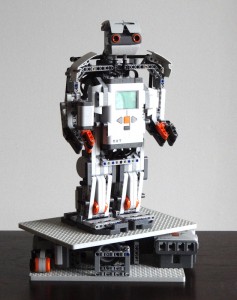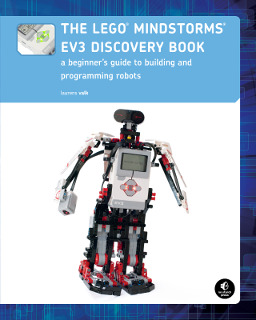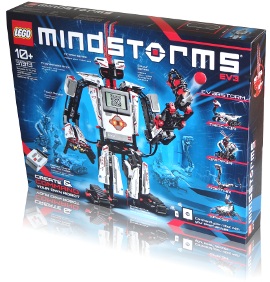Remember the MinuteBot Baseplate Kickstarter project? It was funded successfully, so the base plates have been turned into a real product. I’ve received a few plates last week as part of the pledge I made to the project.
I’m quite satisfied with the quality of the product. They’re strong and hold LEGO pieces well. Obviously, you shouldn’t expect LEGO quality, or they would have had to raise $100,000 to produce the plastic mould – not $8,000. The color is somewhere in between Normal white, NXT white and Light Grey.

I didn’t have any specific ideas in mind when I made the pledge, but when I received the plates, I immediately turned them into the sandwich shown above. This model should come in handy for display at events. Now the robots just turn around without falling off the table. Purists may say they could have done this without the base plate. That’s OK. For everyone else, here’s a few more pictures.
UPDATE: You can buy the base plate for $30 here.



I can do that without the baseplate. 😉
Well done, man!
You mention: “One of the geatrest difficulties I’ve found in building these robots is getting around the sensor and motor limitations… only four sensors and three motors are available per NXT Brick.”I’m not sure that’s completely accurate, in that the motor encoders are really extra sensor, and valuable ones at that. For LNE/Packbot for instance, the front flippers can be used to literally “feel” for obstacles, like the height of a step or potentially the depth of a hole, by watching the motor encoders. Carefully monitoring the power and rotations of each drive motor can provide you with an idea of how much the robot is slipping or straining, telling you something about the ground it is moving over. A 3-axis accelerometer (a single sensor) can tell you not only what slope the robot is climbing, but its orientation on that slope, etc… and if you don’t have an accelerometer you can make a rough one that at least handles tilt using a series of colored parts on a pendulum that hangs in front of a light sensor.The part I find difficult is actually putting enough “intelligence” into the system to fully utilize the sensors. Usually the sensor systems on a robot can by used to produce a lot of information about the environment, but it takes some careful thought how best to tease that out (& use it).
Do you comeback. Please reply my messenger.
$30! Wow that is expensive isn’t it? I just can’t find myself spending that much money on just one, maybe three for that price but not one.
Hi Laurens!
I am Max, and im from Germany!
I built all your Projects and I loved them!
My English isn´t the best, but I think you understand!
With your books, I learned how to use and programm the NXT!
And I only want to say 2 words:
THANK YOU!!!
Hi Laurens – do you have the design for that turntable available? Do you know if i can be built with the standard EV3 home kit?
Thanks for posting this, it’s gonna be useful in my Lego 3-axis robot arm.